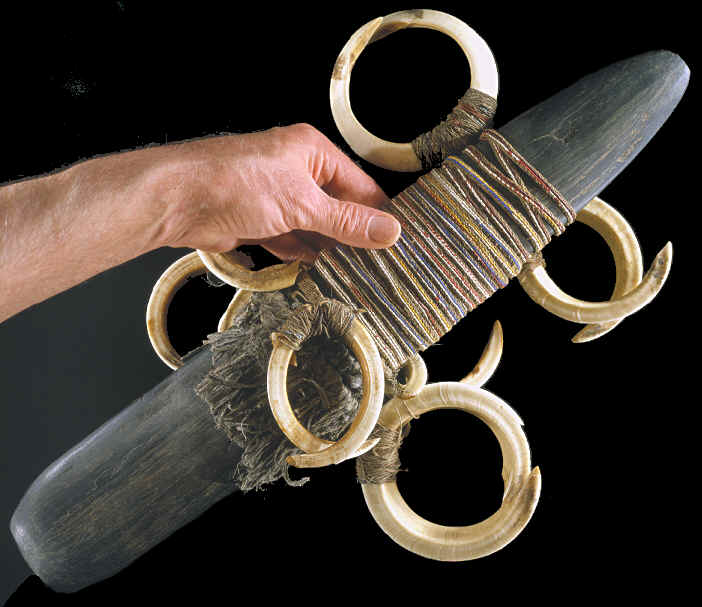|
DECORATED DISPLAY-
"This display-exchange stone was collected in September of
1995 in a
small Loni compound in the loosely knit village of Ibele. It was
reputed to have special powers and was one of the most
sacred
objects of the compound. It was offered with much
secrecy and not a
small amount of fear by the second headman
of the compound whose
name was Yan. Some of the tusks and
trinkets tied to this stone were
said to be offerings for the dead
son of the headman, Hecky who had
recently died when their
sleeping hut burned" (1996: Konder).
It was suggested that
Yan gave this stone away because of the influence
the local
missionary was having on the people. Some were wanting to
get rid of the stones and some were wanting to keep them.
Hampton suggests that display-exchange
stones evolved
from flat and tubular style axe blades
(1999: Hampton, p. 294). Some
exchange
stones, like this example, are shaped like axe blades
and have
sharpened blades.
|
